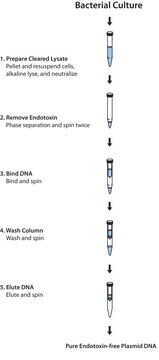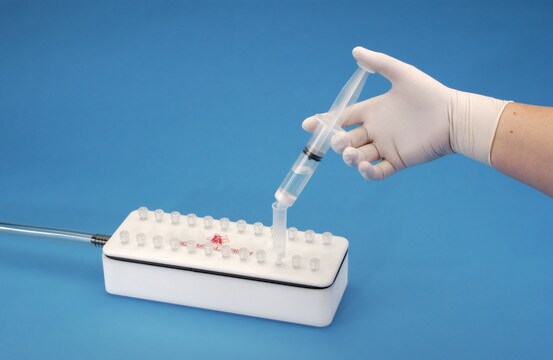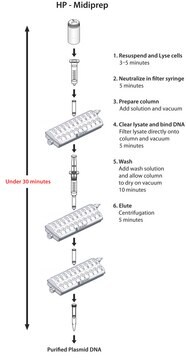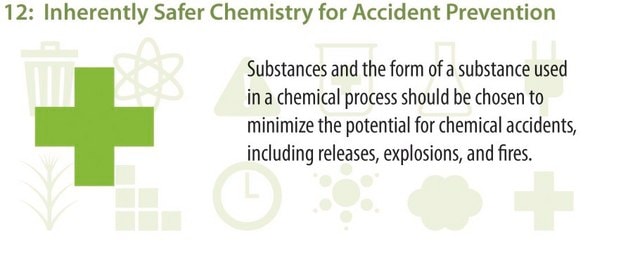HPPIKRO
Roche
High Pure Plasmid Isolation Kit
Roche, pkg of 50 purifications (11754777001), pkg of 250 purifications (11754785001)
About This Item
Prodotti consigliati
Produttore/marchio commerciale
Roche
Livello qualitativo
Confezionamento
pkg of 250 purifications (11754785001)
pkg of 50 purifications (11754777001)
Categorie correlate
Descrizione generale
The High Pure Plasmid Isolation Kit isolates purified plasmid DNA in small quantities using the alkaline lysis method, a commonly used method that generates highly purified plasmid DNA from E. coli, free of RNA contamination.
Capacity: The High Pure Spin Filter Tubes hold up to 700 μL sample volume.
Sample: 0.5 - 4.0 mL cultures of E. coli (harvested at a density of 1.5 - 5.0 A 600 units/mL)
Applicazioni
- PCR
- Sequencing
- Cloning
- In vitro transcription
- Restriction enzyme digests
- Random primed labeling
Caratteristiche e vantaggi
- Quickly purify up to 24 plasmid samples in <30 minutes.
- Minimize DNA loss with a kit that removes contaminants without precipitation or other handling steps that degrade DNA.
- Improve reliability and reproducibility in downstream applications with a kit that removes RNA and other impurities that cause plasmid DNA to behave unpredictably.
- Eliminate the use of hazardous organic compounds such as cesium chloride, phenol, chloroform, and ethidium bromide.
Componenti
- Suspension Buffer
- RNase A, dry powder
- Lysis Buffer
- Binding Buffer
- Wash Buffer I
- Wash Buffer II
- Elution Buffer
- High Pure Spin Filter Tubes (containing glass fiber fleece)
- Collection Tubes
Qualità
Nota sulla preparazione
Altre note
Avvertenze
Danger
Indicazioni di pericolo
Classi di pericolo
Acute Tox. 4 Inhalation - Acute Tox. 4 Oral - Eye Dam. 1 - Skin Corr. 1
Codice della classe di stoccaggio
8B - Non-combustible, corrosive hazardous materials
Classe di pericolosità dell'acqua (WGK)
WGK 1
Punto d’infiammabilità (°F)
Not applicable
Punto d’infiammabilità (°C)
Not applicable
Scegli una delle versioni più recenti:
Certificati d'analisi (COA)
It looks like we've run into a problem, but you can still download Certificates of Analysis from our Documenti section.
Se ti serve aiuto, non esitare a contattarci Servizio Clienti
Possiedi già questo prodotto?
I documenti relativi ai prodotti acquistati recentemente sono disponibili nell’Archivio dei documenti.
I clienti hanno visto anche
sequencing of laryngeal Leishmania infantum infectionv
Il team dei nostri ricercatori vanta grande esperienza in tutte le aree della ricerca quali Life Science, scienza dei materiali, sintesi chimica, cromatografia, discipline analitiche, ecc..
Contatta l'Assistenza Tecnica.








